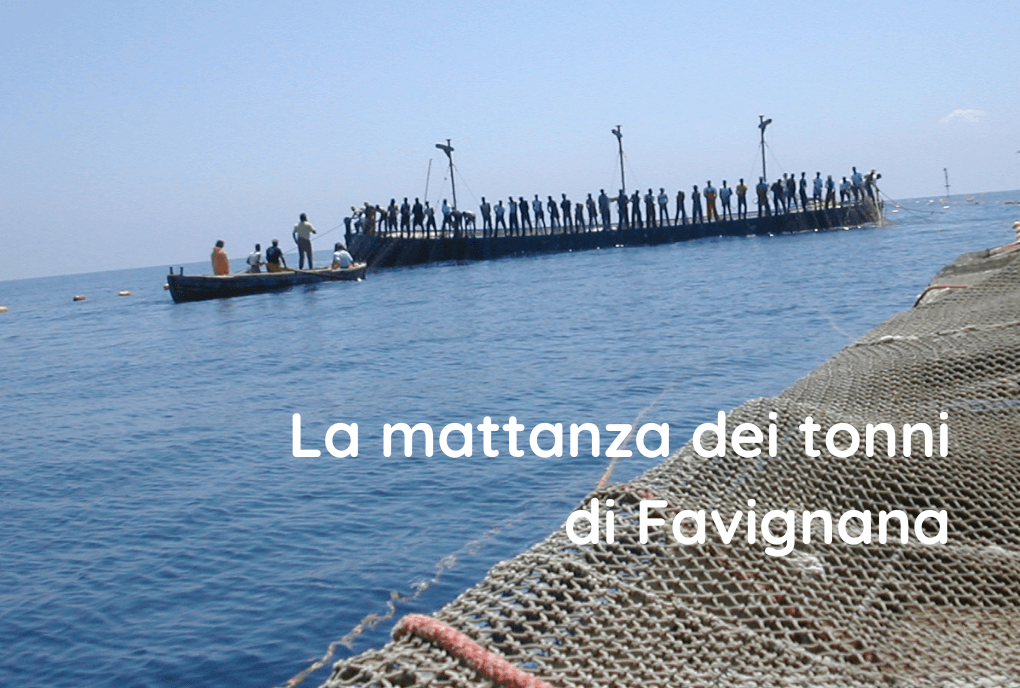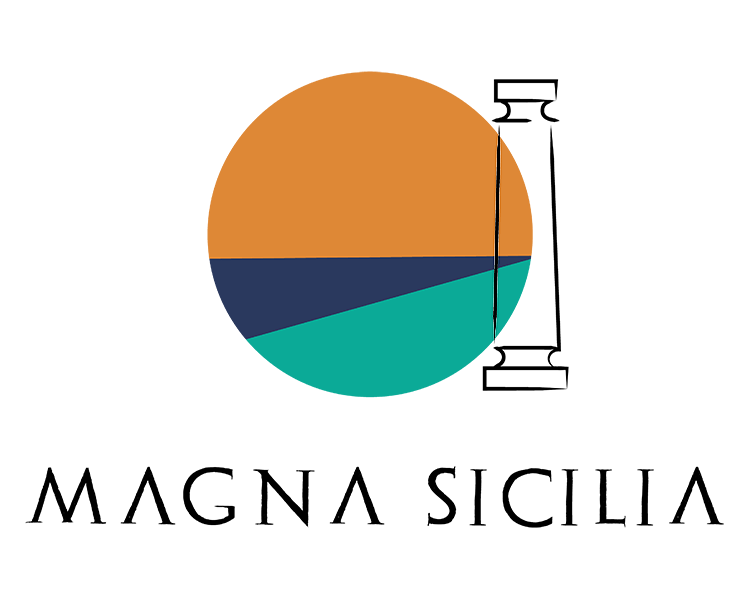
The slaughter of tuna from Favignana
Also known as the “Big Butterfly,” the island of Favignana forms, along with Levanzo e Marettimo, the archipelago of the Egadi Islands. With its colors of a thousand shades of the blue of the sea and the white of the tuff quarries, this place gives landscapes capable of leaving you breathless. And it also gives another color, red, which refers not only to the clay rocks of Cala Rossa, but also to a traditional practice rich in history:
That of the tuna slaughter.
The bluefin tuna fishery
The term slaughter comes from the Spanish verb matar, which means, not surprisingly, to kill. The word, in particular, was used to describe the day’s ascent of the tuna fishery, a term that refers only to the nets, and not to the plant where all tuna processing operations took place (as is erroneously tended to be assumed). The nets had a depth of 40 meters and extended for about 1 km.
The tuna fishery of Favignana was known as the queen of tuna fisheries, both for the numbers of tuna caught (in 1964 the record was 14,000 tuna), as well as for the size: in 1982 a tuna weighing 640 kg was caught, the heaviest ever.
All operations were managed by the Rais, a term of Arabic origin meaning chief or director. The figure of the
Rais was almost priestly: for on him depended the proper functioning of the tuna fishery and, consequently, a good fishing year.
The start of operations
All the work had begun in April: during this month, nets were prepared, then waited for the rising of the tuna schools to carry out mattanza in June. In July the whole thing was uninstalled, and in the winter months we took care of plant maintenance.
The nets were organized as follows: they were placed at a strategic point, particularly between Favignana and Levanzo for fishing in the Egadi Islands. Tuna fishermen knew perfectly well the behavior of tuna: fish, driven by warm currents and the instinct to reproduce, moved From the Atlantic Ocean to the shores of the Mediterranean, where they laid their eggs.
Tuna, following a counterclockwise motion, they would begin the ascent of the various chambers into which the tuna fishery was organized. Once good quantities are reached, the Rais would begin fishing operations. The tuna fishermen checked the condition of the nets daily via a glass-bottomed boat so that they could check the seabed and understand When to hoist the coppo (the bottom net used to surface tuna).
At the right time, the boats would stand in a circle around the fishing area: Thus began the slaughter. During this rather bloody fishing practice, fishermen sang chants, called waffleome, useful for rhythmic arm movements to keep the net balanced. At the beginning of the practice, they intoned in particular. l’
Aiamola, who invoked the protection of the saints and of Jesus For the fishing to be successful. In the end, however, we would let go of profane and jovial songs: they sang the Lina Lina, which extolled the physical beauties of a girl in search of a husband (the girl, symbolically, was the tuna fishery waiting for the fish to arrive).
Transportation and processing
At the end of the slaughter, the tuna were hooked and loaded onto boats. The boats returned either to the pier, or to the camparìa, the headquarters of the tuna fishermen. The word is derived from the Sicilian verb
campare and showed just how important fishing was to the islanders’ livelihood.
Once he reached the ground, there began the first phase of processing: tuna was hung from canopies and left to bleed for 24 hours to avoid both storage problems and intestinal problems. It was then skinned and cleaned of all entrails.
Of tuna, nothing was thrown away: bones, for example, were crushed and made into flour, which was used as manure or animal feed. From the head, on the other hand, tuna oil was made, used as an impregnating agent for wooden sheds in the winter months. However, oil production was shifted On the tuna fishery on Ant Island, because of the annoying smell it caused. It is not surprising, therefore, that this fish was called and is still known as the the pig of the sea.
The other parts of the tuna, on the other hand, were cooked in copper pots in water and salt, then left to dry and transported to the Turin warehouse for canning. Conservation used to take place before salted in wooden barrels, then instead moving on to preservation in oil, in milk with different coloring, to distinguish the value of the parts used.
A new fishing method
Beginning in the 1980s., the first catch problems related to the flying traps. Nets, in fact, were set at the interception of tuna schools already in the Atlantic, and They thus prevented tuna from reaching Mediterranean waters and continuing their natural life cycle. To date, flying traps are the method used for fishing; the traditional method, on the other hand, has been lost: Favignana’s last slaughter was in fact in 2007.
The guided tours
The story of the slaughter is being told today at the former Tonnare di Favignana e di Formica plant at 29 Amendola Street, Favignana. The ticket cost is €8 and is purchasable only at the establishment. Visits are arranged every half hour and last about 60 minutes.
The story of the mattanza deserves special attention because it represents an identifying feature of the Sicilian traditions, capable of blending Arab and Spanish influences from history with Christian culture. He then emphasizes how much human beings have had to learn over time how to procure food for themselves and how the religious sphere has helped them legitimize these sometimes somewhat gory but meaningful practices.
by Beatrice Saura





